|
Designing Multi-Car Trains
|
|
|
|
|
|
|
|
When creating car models specifically for trains with several cars we need to consider whether the track we release will be made up only of single cars or if we've decided to restrict the downloader to using our single car model to make multiple-car trains on our track. While the simplest thing to do would be to make a single car type in anticipation that trains will be made up of several instances of the same car model, all gamers will agree that the most exciting and interesting CTR's come when different car styles are included in the same train.
|
|
|
|
|
|
|
|
By now we've extensively tested our monorail model. At the time it was painted in a solid test color and it was being reviewed with only a single model set up as the FrontCar_ and the MiddleCar_ for trains with multiple cars. It features in our CTR test park throughout many of the sessions in this tutorial in screenshots & videos.
|
|
|
|
|
|
|
|
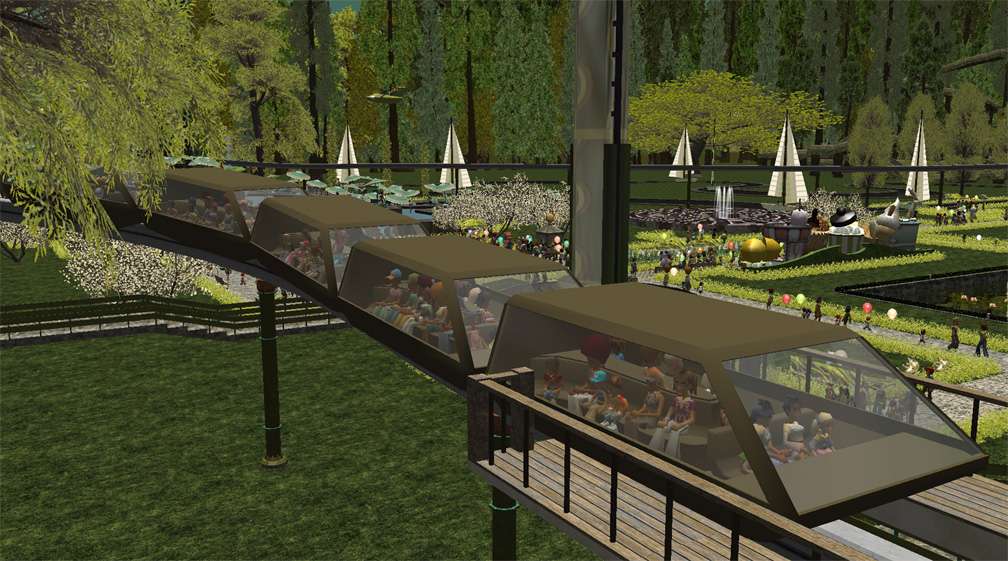
|
|
While the train all made up of the same car type could be considered charming in this particular instance, this is not usually the best way to go. While testing and fine tuning one car style might seem tedious it's enabled us to expand our monorail by creating six additional car varieties without the need to separately test each one of these. We're confident enough with our test results that we've gone ahead and applied the finishing textures to all the car styles we created.
|
|
|
|
|
|
|
|
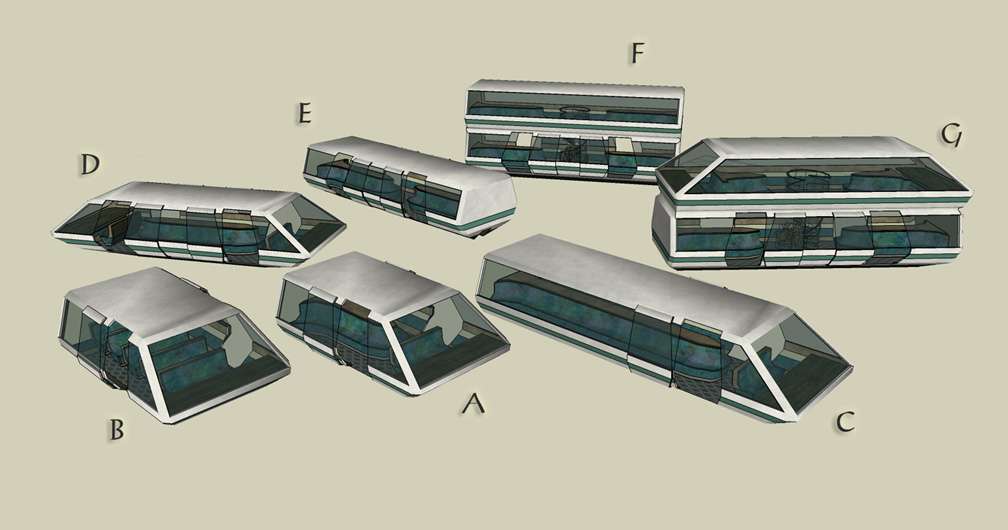
|
|
As you'll discover in a later session the best way to animate car doors is to start out with our doors in a closed position and then to start our XML with an opening animation. So that their placement along the sides of the car may be more easily seen, in these screenshots the door cut-outs have been moved to match their opened animated positions. Let's take a closer look at each car type.
|
|
|
|
|
|
|
|
|
|
|
|
|
|
|
|

|
|
This was our beginning car design from which all the other car types seen here have evolved. Seating 16 guests, it features our custom designed surround-seat at the rear along with standard bench seating in the front. A housing at the front suggests a console which can later be updated into an actual console should we choose to later add a car operator for which we'd also need to alter the arrangement of front facing guest seats. Also at the front, two doors are situated on either side. This car, our A car, is best used as the FrontCar_ or reversed as a RearCar_.
|
|
|
|
|
|
|
|
|
|
|
|
|
|
|
|

|
|
Another FrontCar_ or RearCar_ candidate, our B car model is essentially the same car as A except it has all forward facing seats. Like our A car this car's doors are both located at the front end. It has a capacity of 20 guests. If we had chosen we could have continued rearranging the seats in different ways resulting in any number of different seating configurations presenting themselves as additional car types.
|
|
|
|
|
|
|
|
|
|
|
|
|
|
|
|

|
|
Our C car is the stretch version of our A car, complete with extended surround-seat which puts the capacity of this car up to 34 guests. In spite of the length of this car, because it's another candidate for FrontCar_ or RearCar_ we've opted into putting access doors only at the leading end - after all, stretch limousines don't have a door at the front and a door at the rear.
|
|
|
|
|
|
|
|
We could have included an additional car design by slightly shortening the surround-seat and placing two rows of forward facing seats in the front. Another car style could have been created by adding two more doors at the rear to make a total of four car doors for this car. We didn't think it a good idea to do a stretch version of our B car because, unless we put an aisle down the center there would be too many difficult to access forward facing middle seats which, particularly in the rear of the car, would limit the view available to some of the guests.
|
|
|
|
|
|
|
|
|
|
|
|
|
|
|
|

|
|
Here is a unique shuttle car carrying up to 28 guests that comes with a central wrap-around surround-seating island along with standard seating and a sloped window with a housing below at either end - just right for small parks where one might require single car trains that are run as a shuttle. With this D car being a shuttle car, we thought it best that this model included entry doors at either end.
|
|
|
|
|
|
|
|
|
|
|
|
|
|
|
|

|
|
We've placed two moderately stretched surround-seats here inside our E car. An ideal car for a MiddleCar_, like our D car it comes with four doors, two on either side. As another option for this style we could have moved both door cut-outs to the middle of the train and had two split doors that open down the middle, one in the center of the car with a door half on either side. This car seats 32 guests.
|
|
|
|
|
|
|
|
|
|
|
|
|
|
|
|

|
|
Having added B, C, and D models to this range of cars, creativity was the order of the day when we created this, our F car. With a capacity of 56 guests and in a striking double-decker design it comes with four surround-seats (2 up and 2 down) along with a centrally located glass panelled carpeted spiral staircase to suggest passenger access to the upper floor. A car that will look spectacular placed in multiples, this is another fine candidate for a MiddleCar_.
|
|
|
|
|
|
|
|
|
|
|
|
|
|
|
|

|
|
Similar to our F car, instead of two E cars in a stack here we've altered our F car design by replacing the E car on top with a D car. This model also comes with a spiral staircase. An outstanding feature of this car are its custom wrap-around island-seats at either end of the upper floor. As with our F car, this G car also comes with an elegant planter at the bottom of the spiral stairs. Because of the sloped glass window panels at the front & back end of the top level this model, with a capacity of 34 guests, is just perfect used all on it's own as a SecondCar_ or as the PenultimateCar_.
|
|
|
|
|
|
|
|
|
|
|
|
|
|
|
|
Each of these car designs include two types of polished solid wood interior trim, Wilton fitted carpet, designer fabric upholstered seats, faux blue marble interior trim for styling, smoked glass, plush carpet trim integrated into the wall panelling design for noise absorption, stucco textured ceilings for further car interior noise reduction, and a dyed faux leather exterior accent trim stripe.
|
|
|
|
|
|
|
|
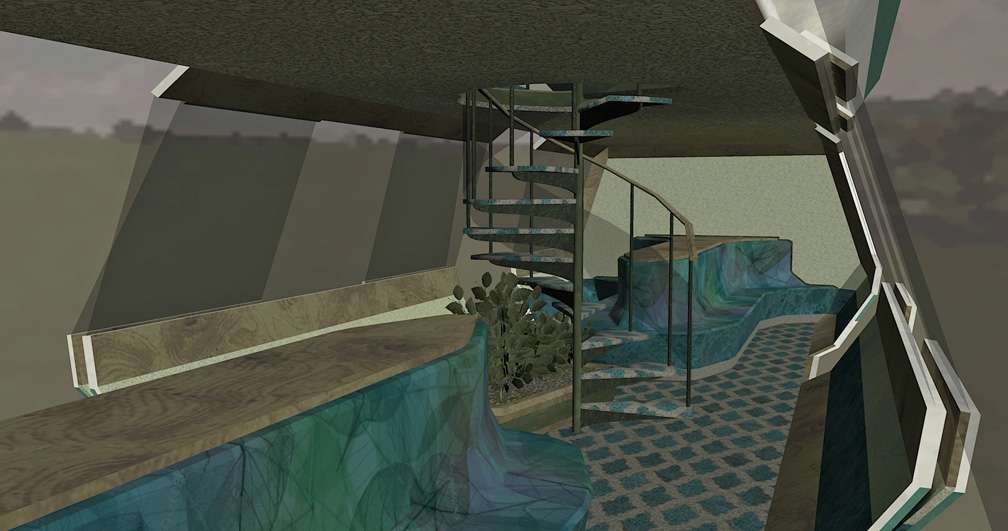
|
|
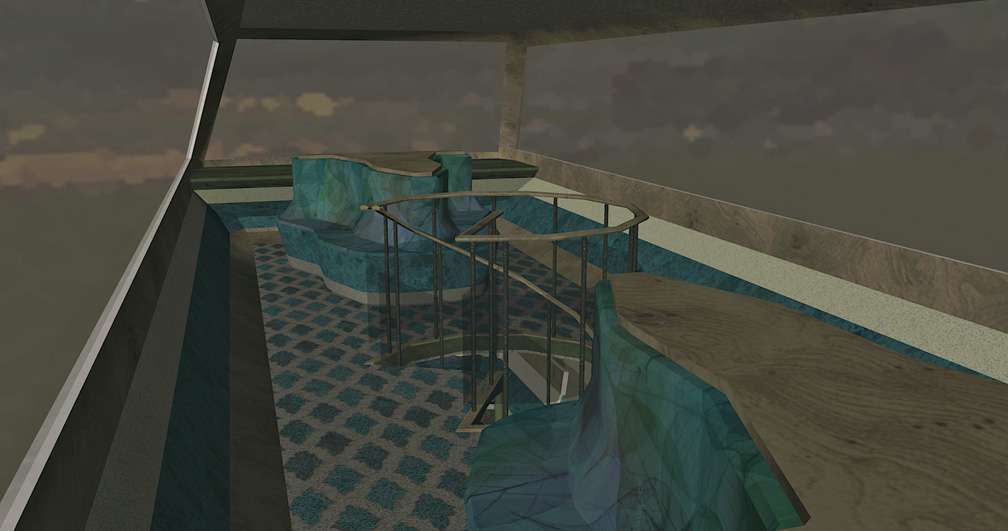
|
|
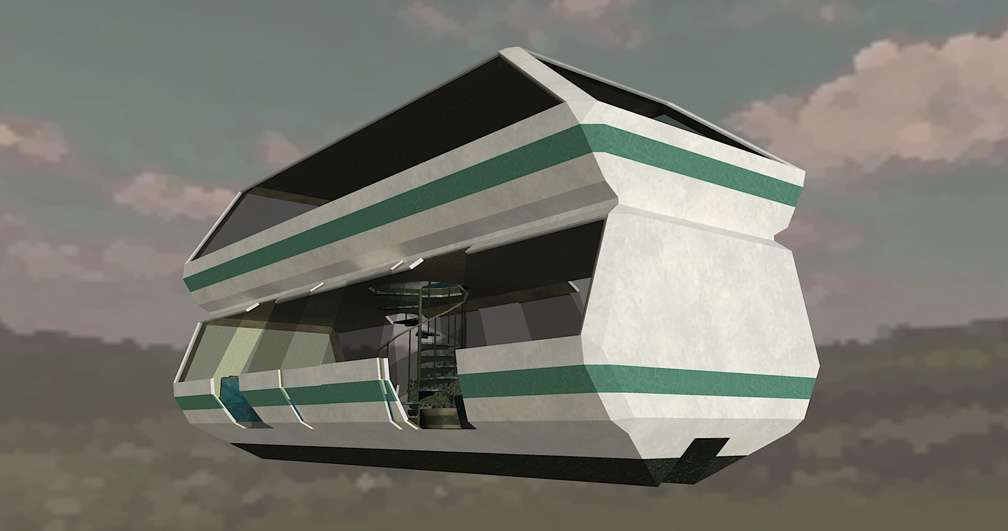
|
|
Interestingly, although we were satisfied with the amount of testing given the original car design, painting the actual textures on each car presented additional challenges as to what texture goes where, in particular, how the interior and exterior textures would wrap around the door edges and the window & door openings.
|
|
|
|
|
|
|
|
|
|
|
|
|
|
|
|
|
|
It seemed the more car types we created the more options presented themselves to suggest additional car designs. Although as it stands this car range totals 7 different car styles, the A, B, and C cars are reversible (for use as the FrontCar_ and/or the RearCar_) so when considering the RearCar_s there are actually 10 car types to consider.
|
|
|
|
|
|
|
|

|
|
Plainly, when reviewing how to release such a number of car styles we need to see how they'll look in various configurations which means before we actually commit these car designs to CTR Creator we should take a look in SketchUp at how we might arrange them so as to come up with pleasing trains. When we're done we'll be able to see at a glance how to order them and what to name each car type in the WagenDaten_.
|
|
|
|
|
|
|
|
We haven't yet added the car effects and with good reason. Before designing these cars we confirmed that monorail tracks are 50cm in width. As we've decided we'll release these cars on TrackCTR_XX00Monorail due to this CTR's broad sweeping curves, gentle inclines, and good assortment of track piece configurations. We need to confirm the height of these cars by matching Z=0 in SketchUp to the height of a straight piece of TrackCTR_XX00Monorail in RCT3.
|
|
|
|
|
|
|
|

|
|
Our findings tell us that the top of TrackCTR_XX00Monorail is only 50cm above the 1m terrain increment mark as opposed to the top of the in-game monorail being 90cm above the 1m mark. Although wheel effects are always placed at Z=0 we now know at what height above Z=0 in SketchUp that the rabbet in the bottom of our cars needs to be so that they will match the height of our chosen track.
|
|
|
|
|
|
|
|

|
|
Taking such measurements off TrackCTR_XX00Monorail in RCT3 we now know which height to create a factice track in SketchUp on which to test our car configurations. At the correct height in relation to Z=0 we can now place our cars in various configurations on our factice tracks to develop some ideas. We display those ideas on the next page.
|

















































